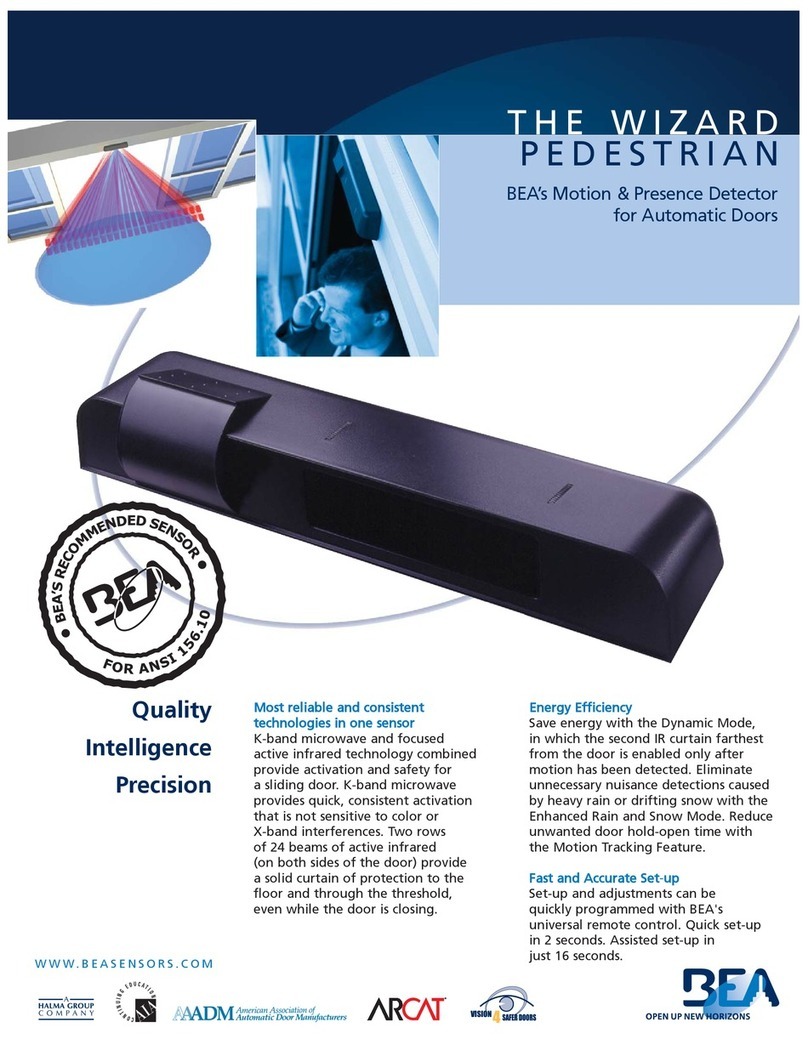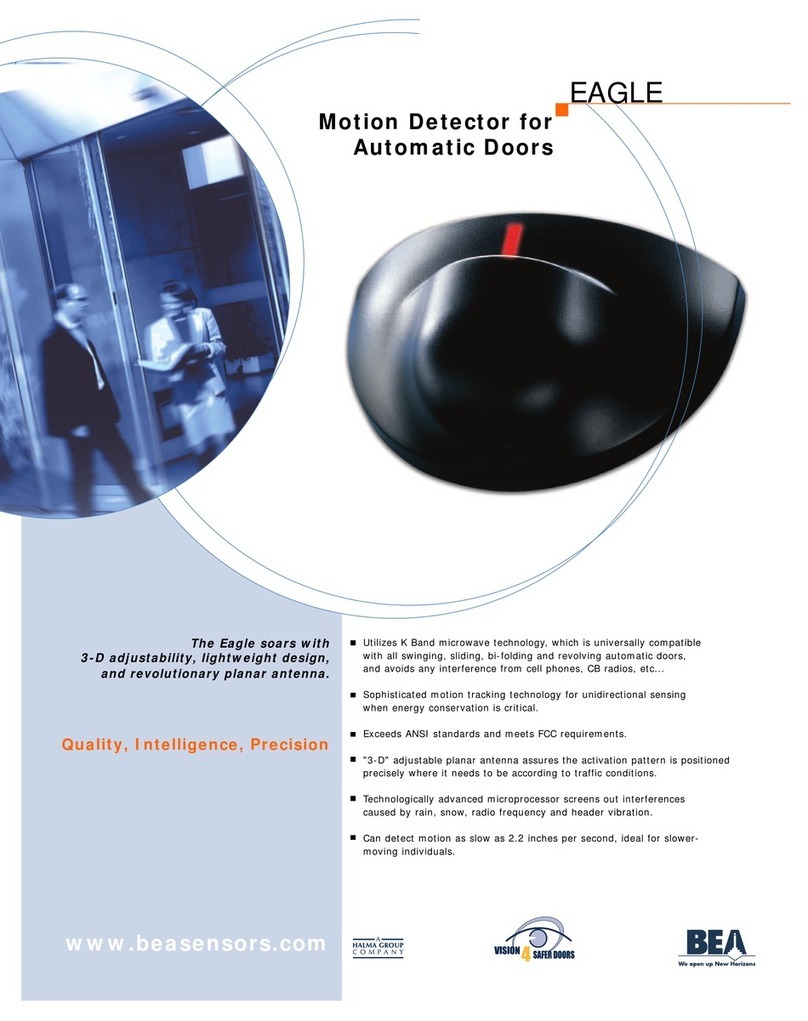5/8
Note: All parameters or functions listed in the following tables are only accessible if the sensor is in adjustment session.
The red LED is then slowly flashing.
During an adjustment session each parameter may be checked or changed at any time in the following way :
PARAMETERS OPERATIONS
CHECK
VALUES
Press the key corresponding to the parameter to be checked and then press the CHECK VALUES key (15).
Count the number of times the LED flashes, which corresponds to the value of the checked parameter. No LED flash corresponds to the
value 0.
Repeat this operation to check the value of the other parameters if required.
Example : SENSITIVITY key (7) – 7 flashes of the LED : the radar sensitivity is set at the value 7.
CHECK VALUES :
PLUS
Press the key corresponding to the sensitivity (7) or holdtime (6) parameter to be modified and then press the PLUS key (3) to increase the
value by 1 unit.
PLUS :
MINUS
Press the key corresponding to the sensitivity (7) or holdtime (6) parameter to be modified and then press the MINUS key (5) to reduce the
value by 1 unit.
M NUS :
Note about LED signal: The red LED flashes quickly waiting for the value. Once this has been entered, it flashes slowly again.
PARAMETERS OPERATIONS DEFINITIONS - ADVICES
SENSITIVITY
Press the SENSITIVITY key (7).
Use the NUMBER keys 0-9 (1) to enter the required sensitivity (or adjust this
parameter using the PLUS (3) or MINUS (5) keys as explained above)
SENS T V TY :
To increase the sensitivity means to increase the sensor
capabilities to detect small useful signals.
Practically, to increase the sensitivity leads to increase the
dimensions of the sensing field.
HOLD TIME
Press the HOLD TIME key (6).
Use the NUMBER keys 0-9 (1) to enter the required hold time (0.5 s to 9 s)
(or adjust this parameter using the PLUS (3) or MINUS (5) keys as explained
above).
HOLD T ME :
The hold time allows extended output activation time after a
motion detection has stopped. It is recommended to use this
parameter instead of the operator’s one with the same function
(interferences with the sensor)
DETECTION
MODE
EAGLE ONE HM
only!
Press the DETECTION MODE key (8).
Use the NUMBER keys 1-5 (1) to select the required mode :
Key 1 : Bidirectional mode
Key 2 : Unidirectional mode
Key 3 : Unidirectional mode with MTF-function
Key 4 : Unidirectional mode reverse
Key 5 : Unidirectional mode reverse with MTF- function
DETECT ON MODE :
With the bidirectional mode, the approaching and departing
target is detected. With the unidirectional mode, only the
approaching target is detected. With the unidirectional mode
reverse, only the departing target is detected.
Using the MTF (Motion Tracking Feature) enables the sensor
to automatically switch from the unidirectional mode to
bidirectional mode as soon as a target is detected. This
function is recommended for applications with elderly people
or anyone approaching the door hesitantly.
IMMUNITY
Press the IMMUNITY key (9). Use the NUMBER keys 1-9 (1) to select the
required mode:
Key 1: Detection of quasi-presence
Key 2: Normal
Key 3: Increased immunity
Key 4-9: Additional increased immunities
4: lowest level
9: highest level
MMUN TY :
To increase the immunity means to strengthen the
resistance to external disturbances such as rain, vibrations,
etc.
The additional increased immunity modes (4-9) reduce
disturbances in highly reflective environments (airlocks,
curved and round sliding doors, metallic environments
etc.).
MOUNTING
HEIGHT
Press the MOUNTING HEIGHT key (13),
Use the NUMBER keys 1-2 (1) to select the required mounting height :
Key 1 : Standard mounting height
Key 2 : High mounting height
MOUNT NG HE GHT:
The sensor presents an increased sensitivity scale in high
mounting mode. This setting is recommended when the
detection on the field limits is erratic.
OUTPUT
CONFIGURA-
TION
Press the OUTPUT CONFIGURATION key (17).
Use the NUMBER keys 1-2 (1) to select the required output configuration :
Key 1 : Active mode
Key 2 : Passive mode
OUTPUT CONF GURAT ON:
Active Passive
Detection
No Detection
DOOR
CONTROL



























